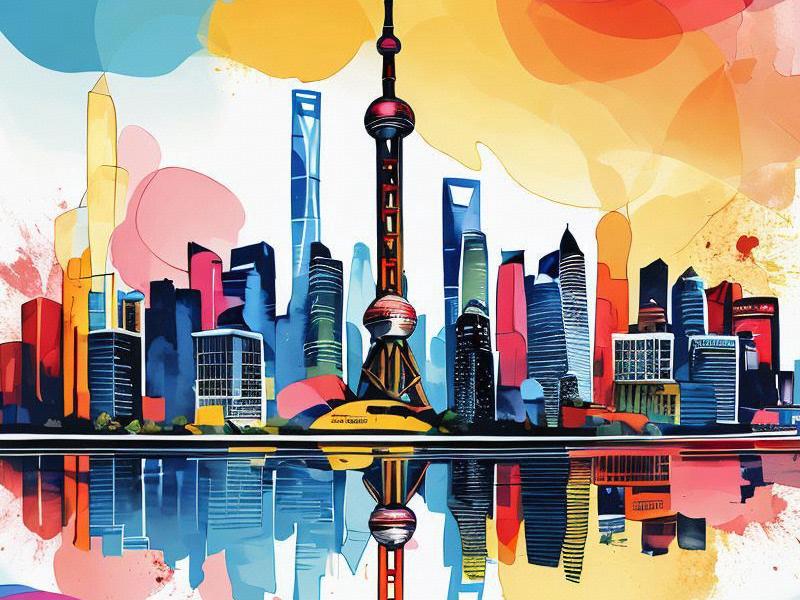Shanghai and Its Surrounding Areas: A Comprehensive Overview
⏱ 2025-04-23 08:11 🔖 上海龙凤419
📢0℃

Shanghai, often referred to as the "Pearl of the Orient," is a city that has witnessed rapid transformation over the past few decades. Its strategic location at the mouth of the Yangtze River has made it a key player in China's economic rise. The city's skyline, dominated by iconic structures like the Oriental Pearl Tower and the Shanghai Tower, is a testament to its status as a global metropolis.
The economic landscape of Shanghai is diverse, with a strong emphasis on finance, trade, and technology. The Shanghai Stock Exchange is one of the largest in the world, attracting investors from across the globe. The city's free trade zone has further solidified its position as a hub for international commerce. Additionally, Shanghai is home to numerous multinational corporations and startups, fostering innovation and entrepreneurship.
However, Shanghai's story is not just about economic prowess. The city is a melting pot of cultures, with a rich history that blends Chinese traditions with Western influences. The Bund, a historic waterfront area, showcases this blend, with its colonial-era buildings standing alongside modern skyscrapers. The city's art scene is thriving, with galleries and museums like the Power Station of Art and the Shanghai Museum attracting visitors from around the world.
The surrounding areas of Shanghai, particularly Jiangsu and Zhejiang provinces, are integral to the region's development. Jiangsu, known for its advanced manufacturing and high-tech industries, is home to cities like Suzhou and Nanjing. Suzhou, often called the "Venice of the East," is renowned for its classical gardens and silk production. Nanjing, the capital of Jiangsu, boasts a rich historical heritage, including the Sun Yat-sen Mausoleum and the Ming Xiaoling Mausoleum.
上海龙凤419贵族
Zhejiang, on the other hand, is famous for its entrepreneurial spirit and vibrant private sector. Cities like Hangzhou, the capital of Zhejiang, are hubs for e-commerce and technology. Alibaba, the world's largest e-commerce company, is headquartered in Hangzhou, reflecting the province's innovative drive. The West Lake in Hangzhou, a UNESCO World Heritage site, is a symbol of the region's natural beauty and cultural significance.
The integration of Shanghai with its surrounding areas is a key aspect of regional development. The Yangtze River Delta region, which includes Shanghai, Jiangsu, and Zhejiang, is one of the most economically dynamic areas in China. The region's infrastructure, including the Shanghai-Hangzhou High-Speed Railway and the Jiangsu-Zhejiang-Anhui Integration Project, facilitates seamless connectivity and promotes economic collaboration.
Cultural exchange is another vital component of the Shanghai and surrounding areas' relationship. The city's international community, with a significant expatriate population, contributes to its cosmopolitan character. Festivals like the Shanghai International Film Festival and the Shanghai Fashion Week attract global attention, showcasing the region's cultural vibrancy.
上海龙凤419社区
Environmental sustainability is also a growing concern in the region. Efforts are being made to balance economic growth with environmental protection. Initiatives like the Shanghai Green Belt and the Jiangsu-Zhejiang Ecological Corridor aim to preserve the region's natural landscapes and promote sustainable development.
Education and research play a crucial role in the region's future. Universities like Fudan University and Tongji University in Shanghai, as well as Zhejiang University and Nanjing University in the surrounding provinces, are centers of academic excellence. These institutions are fostering innovation and contributing to the region's knowledge economy.
Tourism is another significant sector in Shanghai and its surrounding areas. The city's modern attractions, such as the Shanghai Disneyland and the Jin Mao Tower, draw millions of visitors annually. The surrounding provinces offer a mix of historical sites, natural beauty, and cultural experiences, attracting both domestic and international tourists.
上海龙凤419官网
The regional government has implemented various policies to enhance the quality of life for residents. Urban planning initiatives aim to crteealivable cities with efficient public transportation, green spaces, and affordable housing. Social welfare programs focus on improving healthcare, education, and employment opportunities.
In conclusion, Shanghai and its surrounding areas represent a dynamic and interconnected region that is shaping China's future. The city's economic strength, cultural diversity, and strategic location, combined with the contributions of Jiangsu and Zhejiang provinces, make the Yangtze River Delta a global powerhouse. As the region continues to evolve, it remains a beacon of progress and a model for sustainable development.
Shanghai's Pan-Yangtze Synergy: Engineering a New Urban Civilization【长三角新格局】2025上海大都市圈融合发展白皮书Shanghai's Green Revolution: How China's Megacity is Leading the Sustainable Urban FutureShanghai's She-Economy: How the City's Women Are Leading China's Business RevolutionShanghai's Journey to Becoming a Global Innovation HubShanghai's Nightlife Renaissance: How Premium Clubs Are Redefining Urban EntertainmentShanghai's Techno-Cultural Tapestry: Weaving Blockchain, AI, and Imperial LegacyThe Evolution of Shanghai's Nightlife: How Entertainment Venues Are Redefining Urban LeisureThe Velvet Rope Economy: Inside Shanghai's Exclusive Nightlife RenaissanceNeon Renaissance: Shanghai's High-End Club Culture in the Post-Pandemic Era
海派烟火眉:上海美女的市井诗行与精神注脚《霓虹深处:南京东路百年商业街的进化论》《百乐门到元宇宙:上海娱乐会所进化论》霓虹与檀香:上海高端会所三十年文化流变"四段式模板
7. 历史参考:前两篇分别以"感官革命"和"时空折叠"为切入点,本次需创新视角
8. 时效元素:当前为2025年,可融入AI、元宇宙等现代科技元素
9. 价值导向:展现独立、智慧的当代上海女性形象,规避物化倾向
以下是符合要求的深度特稿:《梧桐树下的方程式:95后女科学家与旗袍实验室的双城记》《石库门密码:上海里弄建筑的时空折叠》《石库门里的时光标本》《梧桐树下的城市镜像》梧桐区镜像:上海女性的空间叙事与身份建构
空间修辞,身体政治,时尚语法,记忆拓扑,社群算法

